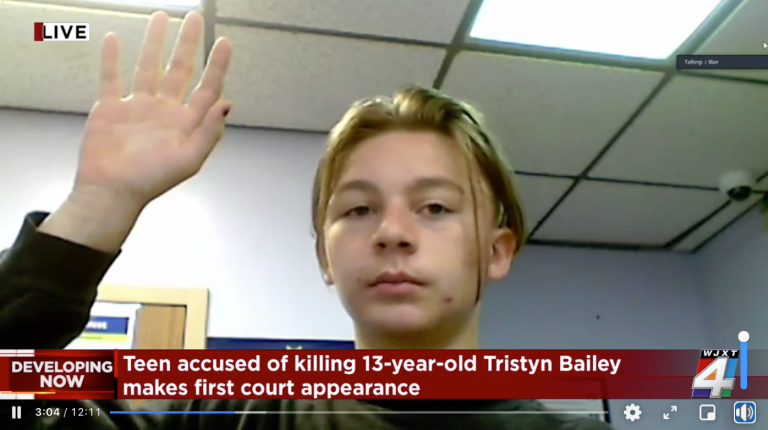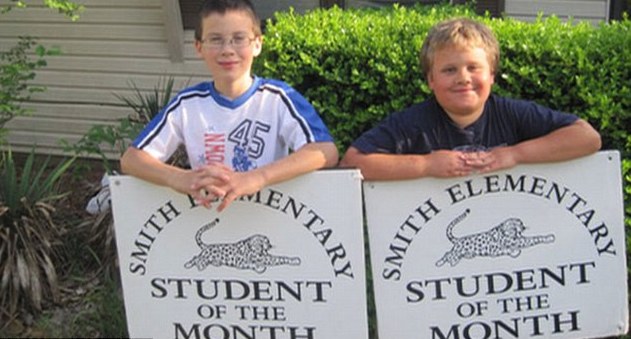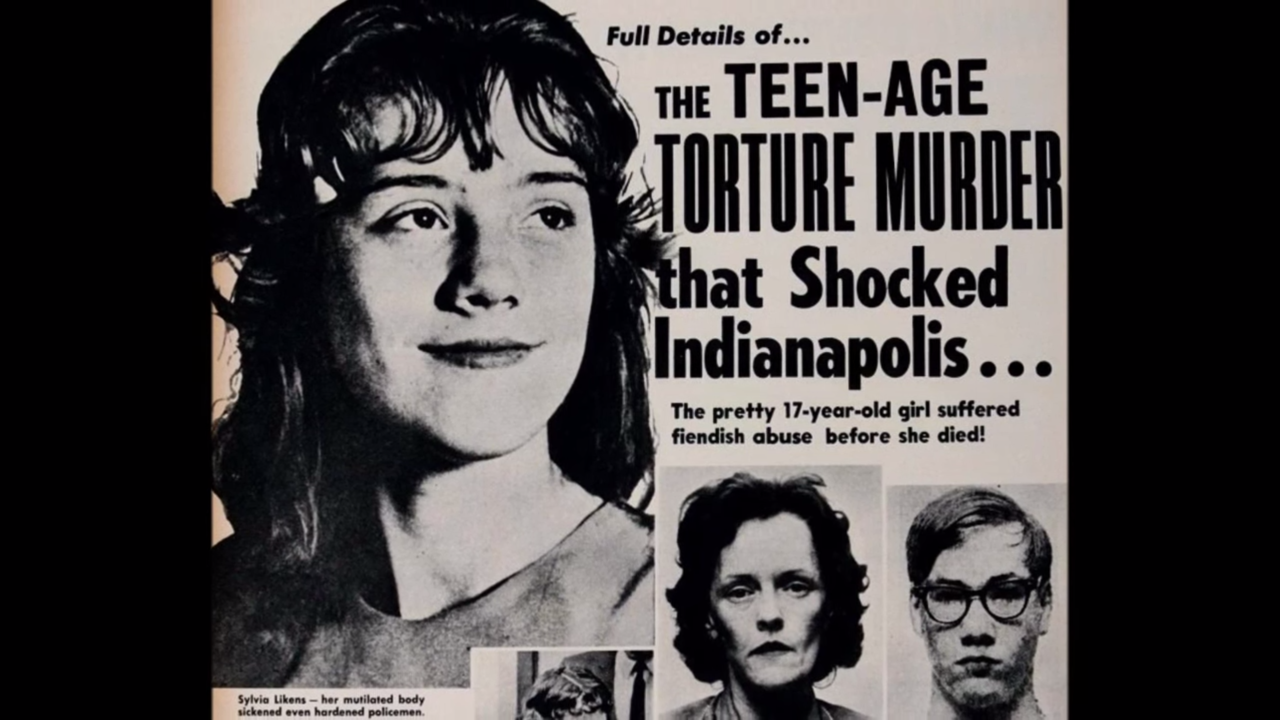
The Horrific, Tragic Death Of 16-Year-Old Sylvia Marie Likens
The most remarkable injuries, by far, were the words in block letters that had been burned directly onto her stomach: "I'M A PROSTITUTE AND PROUD OF IT!" Thus ended one of the most horrible crimes ever committed against a single victim.
By ![]() Denise Noe
Denise Noe
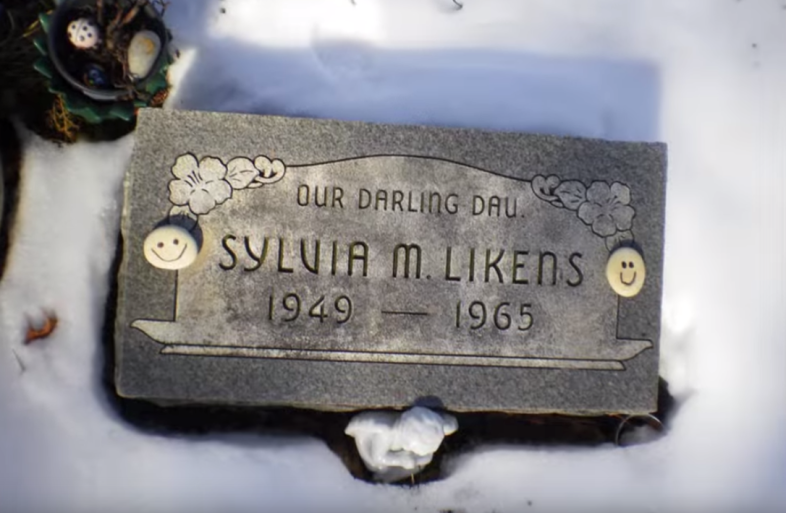
A Young, Tortured Girl Is Dead
On October 26, 1965, Indianapolis police answered a call saying that a girl had died. The call came from a pay telephone in front of a Shell station in a poor section of the city. The caller was a teenaged boy whose voice had not finished changing into that of an adult man. He sounded very nervous and directed the police to the address, 3850 East New York Street, at which they would find the dead female.
When the cops got to the dingy, rundown, clapboard home to which the anonymous caller had directed them, they found the emaciated dead body of 16-year-old Sylvia Marie Likens. She was covered with bruises and small wounds, later revealed to be cigarette and match burns that numbered over 100. There were also large areas where the outer layer of skin had peeled off. Likens also had a large numeral “3” branded on her chest. However, the most remarkable injuries by far were the words in block letters that had been burned directly onto her stomach: “I’M A PROSTITUTE AND PROUD OF IT!”
Thus ended one of the most horrible crimes ever committed against a single victim.
The crime had been perpetrated by an informal group of teenagers and children—some as young as 11 and 12—who were led by a 37-year-old woman. That woman’s name was Gertrude Baniszewski (pronounced “Ban-i-SHEF-ski” rather than the more fittingly ominous sounding way it looks like it should be said: “Ban-i-ZOO-ski”). Sylvia and her younger sister, the 15-year-old disabled Jenny Fay Likens (she had a limp due to polio and a brace around that leg) had been boarding with Baniszewski since early July.
At that time, the Likens parents had left Sylvia and Jenny in the care of Mrs. Baniszewski—they knew her as “Mrs. Wright”—so they would be free to travel the carnival circuit operating a concession stand.
![]()
Baniszewski’s Background
Gertrude Baniszewski’s life up until the time she met the Likens family had been difficult and sad but in no way criminal (at least on her part). She was born Gertrude Van Fossan in 1929, the third of six children in a lower-class family. She always liked her father better than her mother and suffered the trauma of watching her beloved father die of a heart attack when she was only 11 years old. Sometimes clashing with her mother as a teenager, she dropped out of high school when she was sixteen to marry 18-year-old John Baniszewski, and she seems to have lived pregnantly ever after. Although John Baniszewski was a police officer charged with enforcing the law, he frequently broke it to assault his wife when she annoyed him. John often ended disagreements between himself and Gertrude with his fists. The couple split up after a decade.
Sometime after, Gertrude met and married Edward Guthrie, but the marriage lasted only three months because Edward did not want the responsibility of caring for children who were not his. (At that time, Gertrude had four kids.) She and John remarried each other, then divorced seven years and two more kids later in 1963. A much younger man named Dennis Lee Wright took an interest in Gertrude. He was 23 and she was 37 when their romance blossomed. Although it was unfashionable at the time, they lived together for a while out of wedlock. Dennis could be abusive to his live-in girlfriend. He impregnated Gertrude twice. She suffered a miscarriage, then gave birth to Dennis, Jr. before her boyfriend absconded.
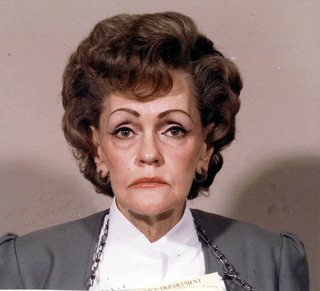
At the time of her fateful meeting with the Likens family, the underweight Baniszewski had a kind of “young-old” look about her. She had a sadly careworn and prematurely lined face. Although not yet 40 years old, she had been pregnant no less than 13 times, giving birth seven times and enduring six miscarriages. A chain smoker, she suffered from asthma, bronchitis, and nervous tension. Her income consisted of haphazard child-support payments (both of the fathers of her children were seriously delinquent) and the few dollars she managed to scrape together from occasional work like ironing and babysitting. Not wanting people to know that her youngest child was “illegitimate,” she called herself “Mrs. Wright.”
Betty Likens, together with daughters Sylvia and Jenny, had recently moved into one of the many rundown, boxlike little houses in the neighborhood. Betty and Lester Likens were recently separated. The family moved often as their father searched for jobs to keep the family above water financially. They had previously resided in this very area.
Sylvia and Jenny, together with a new friend named Darlene McGuire, were walking around the sidewalks in a normal, aimless teenaged manner when they met up with a girl named Paula Baniszewski. Paula was an overweight 17-year-old with a decided mean streak. Although not yet showing, she was also pregnant as the result of brief fling with an adult married man.
The bunch of teenagers headed to the Baniszewski house where they shared soft drinks and laughs. Paula invited them to spend the night. Sylvia and Jenny didn’t have to ask their mother for permission since she was in jail.
The next day, Lester Likens, having been informed of his wife’s arrest, went with his oldest son, 19-year-old Danny, to his estranged wife’s place to pick up Sylvia and Jenny. Not finding his daughters there, he began canvassing the neighborhood. Darlene MacGuire told him they were at the Baniszewskis.
When Lester got to “Mrs. Wright’s” home, it was late in the evening and he was both tired and distraught. He talked about how he and Betty had reconciled and were going to travel with a carnival. Mrs. Wright graciously offered to let him spend the night sleeping on the couch in her cluttered and dusty living room.
The next day, Lester asked—or Gertrude offered (accounts are unclear)—to board Sylvia and Jenny. Regardless of whose idea it was for Mrs. Wright to care for them, an agreement was made that she would board them for $20 a week.
Over a year later in court, Lester Likens would be asked if he had inspected the home in which he left two of his five children. He replied, “I didn’t pry,” an odd way to describe not bothering to take a look-see about a place one’s children will be living in. If he had, he would have found that the household had no stove, only a hot plate, that it possessed fewer beds than were needed for those already living there, and that its kitchen drawers boasted a grand total of three spoons. During Sylvia’s tragic stay, the pitiful number of spoons would shrink to only one.
Thus, Lester Likens placed his minor daughters in the care of a woman he had known for only a couple of days and who had not been recommended to him by anyone. He did know, however, that she had the responsibility of caring for a large family without the help of a husband or other adult in the home.
Before leaving, Lester gave Mrs. Wright some advice that he would later have much reason to regret: “You’ll have to take care of these girls with a firm hand because their mother has let them do as they please.”
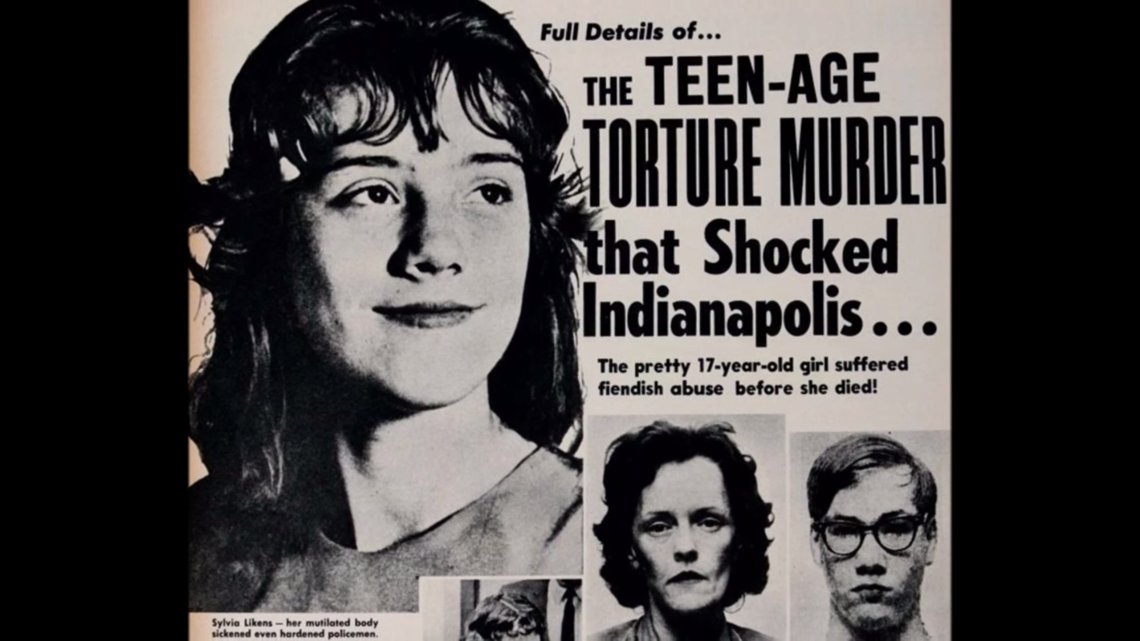
![]()
Who Was Sylvia Likens?

Sylvia’s photograph shows a pretty teenager with wavy dark hair and bangs gazing into the distance with an expression that, as one of the prosecutors said at the trial of her killers, seems “full of hope and anticipation.” The girl described in The Indiana Torture Slaying by John Dean and in the non-fictional and non-speculative passages of Kate Millett’s The Basement appears to have been a fairly average youngster. She enjoyed attending church and made average grades in school. She liked roller skating and dancing. Nicknamed “Cookie,” she is said to have had a lively sense of humor and tended to smile with her mouth closed because she was self-conscious that a front tooth was missing (the result of some childhood roughhousing with a brother).
Dean quotes an acquaintance as remembering that Sylvia felt like “the odd one in the family because she was born between two sets of twins.” Both twins in the Likens family were fraternal rather than identical, and both sets were of different sexes. Danny and Diana were two years older than Sylvia, while Jenny and Benny were a year younger.
The Likens family was always poor and the marriage always troubled. Lester and Betty had split up and gotten back together more than once. Given the demands of two sets of twins and the extra care that had to be given Jenny because of her disability, it seems reasonable that Sylvia may have felt neglected by her parents.
In her 16 years of life, Sylvia had known no fewer than 14 addresses because the family moved so frequently. In the past, she had been left at a grandmother’s house or boarded out when Lester and Betty did not find it feasible to take Sylvia and Jenny along with them.
Like most teenagers, Sylvia made a little cash through odd jobs. She babysat and did ironing (ironically, the same jobs Gertrude Baniszewski held). Also like most in her age group, Sylvia enjoyed music. Her favorite rock group was, unsurprisingly in that era, The Beatles. She also enjoyed to sing. During her early time with the family B., she would sing to Stephanie Baniszewski, who returned the favor. Sylvia’s favorite tune had a lyric about “all the stars in the sky.”
Sylvia appears to have been very close to her disabled sister. When the girls went on one of their frequent roller skating expeditions, Jenny would put a skate on her good foot and Sylvia would pull Jenny around the ring so Jenny could experience skating even with the steel brace around one leg.
The Likens girls’ first week with the Baniszewskis passed without incident. However, during the second week, the Likens parents’ payment was slow to arrive. Gertrude screamed at her boarders, “I took care of you two bitches for nothing!” Both girls had to lie across a bed and expose their bare buttocks so Baniszewski could spank them.
The payment came the next day.
However, the next week brought another paddling for the sisters because Mrs. Wright believed that Sylvia was leading the other kids into stealing out of stores.
Three major accusations against Sylvia would recur. One of them was that she was dishonest, another was that she was physically unclean, and the third, leading to the gruesome work on her belly, was that she was sexually promiscuous.
Were any of these accusations true? Sylvia’s mother had shoplifted from a store in Indianapolis and Sylvia herself was to admit that she stole at least one acquisition. However, it is also true that Mrs. Wright accused the girl of stealing and punished her for it when she had not stolen anything. The Likens family had a custom of going through debris looking for empty soda-pop bottles to turn in for refunds, and Gertrude would erroneously believe that treats Sylvia acquired through this means were stolen.
There is no reason—prior to her enforced dirtiness—to think that Sylvia’s hygiene was particularly bad.
Sylvia was, in all likelihood, a virgin. It is also possible that she was flirtatious.
Gertrude Baniszewski was probably projecting her personal fears outward through these charges. There is no evidence that Sylvia ever stole, but theft had to be sorely tempting to one in her circumstances. Her personal hygiene and the cleanliness of her household were poor, which is understandable considering that she was a chronically ill woman trying to cope with many youngsters and an infant. She had reason to fear for her own and her daughters’ reputations for chastity since she had twice been pregnant out of wedlock and, at the time the Likens girls stayed in her house, her own 17-year-old unmarried daughter Paula was pregnant.
Early in her stay, Sylvia attended church each Sunday with the Baniszewski kids. Paula Baniszewski tattled to her mother that Sylvia had pigged out at a church supper, so Mrs. Wright and some of the children came up with a punishment that had, as many of the torments inflicted on the Likens girl would, a perverse logic to it. Sylvia’s frankfurter was passed around the Baniszewski table and loaded with condiments. Sylvia was ordered to eat this concoction. The girl complied, then promptly vomited and was forced to eat her vomit.
Sometime after this, Mr. and Mrs. Likens stopped by for a visit, as they had a few days after their daughters had been paddled for the late payment. On this occasion, as on the previous visit and those that would follow, neither of the Likens girls complained about the way they were being treated.
![]()
“Was She A Masochist?”
This leads us to a troubling psychological puzzle. In his foreword to The Indiana Torture Slaying, prosecutor Leroy K. New says, “I have been repeatedly asked why Sylvia did not just simply run away.” When the crime was first discovered, a newspaper reporter asked, “Was she a masochist?”
There are several things, other than masochism, which could account for her passivity. First, Sylvia had a limited frame of reference as to what constitutes inappropriate discipline. As noted by Dean, Sylvia and Jenny “were accustomed to being punished, often unjustly.” The early “paddlings” the Likens girls received might have been unfair, but they were not clearly abusive. Grownups frequently make issues out of youngsters’ eating habits as in the universally famous “eat your vegetables!” scolding, so even the hotdog with way-too-much of “everything on it” would not necessarily be seen as beyond the pale.
Indeed, at least one adult witnessed abusive incidents and, although disturbed by them, did not consider them serious enough to report them to the police.
According to The Indiana Torture Slaying, a middle-aged couple with two kids, Raymond and Phyllis Vermillion, moved next door to the Baniszewskis late in August of 1965. Phyllis Vermillion worked the night shift at an RCA plant and needed a babysitter for her children. She decided to visit Gertrude Baniszewski, thinking that the mother of seven who had taken in two boarders might be a good person to care for the Vermillion youngsters.
The two neighbors sat around a table and drank coffee while kids yelled at each other and baby Dennis fussed and cried. Vermillion noticed a slim, pretty, but timid and nervous-looking girl who had a black eye. “That’s Sylvia,” sighed Gertrude. Paula Baniszewski added, “I gave her the black eye.” Just before making this boast, however, Paula filled a glass with hot water and threw it at Sylvia.
Understandably, Phyllis Vermillion decided to look elsewhere for a babysitter. Less understandably, she did not report what she had seen and heard to the authorities.
Early in October, Vermillion paid another social call to the large family next door. Again she saw Sylvia, who looked dazed, even zombified, and who had another black eye plus a swollen lip. “I beat her up,” Paula readily volunteered. Later, Paula began hitting the listless girl with a belt.
Again Phyllis Vermillion left the house without believing she had seen something the police ought to know about. If a supposedly normal, responsible adult could not recognize these actions as criminal, why should anyone expect an untutored teenager such as Sylvia to be able to do so?
Running away may never have occurred to her. Where would she go? By the time sleeping out in the street became preferable to life with the Baniszewskis, it wasn’t an option: She was tied up and/or locked in the cellar.
In fact, there was one instance, which will be described later in this essay, in which she and Jenny did complain about mistreatment. They were not believed. The fear of being disbelieved—which would prove well founded—probably contributed to Sylvia’s previous silence.
Another reason for her failure to complain about the mistreatment may be that she anticipated the question traditionally asked of kids who get picked—why don’t other people like you?—and knew she could not answer it.
Complaining to others would have meant having to tell them what had been done to her. As the mistreatment worsened, it is likely that shame silenced Sylvia.
Both Sylvia and her sister were, for good reason, terrified of Gertrude. They greatly feared the woman’s wrath if they should “tell.”
Finally, Sylvia was probably fiercely protective of her younger sister and feared that “telling” would lead to revenge being taken out on Jenny.








